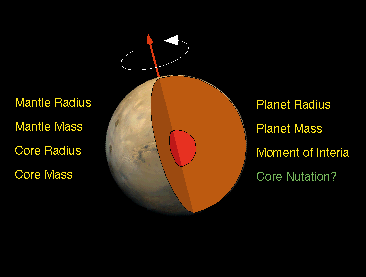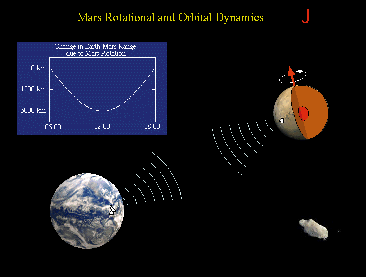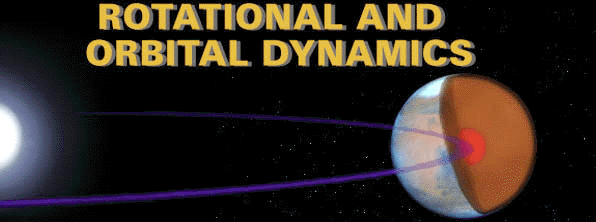
Mars Pathfinder Science Results
As a bonus, mission scientists were able to use radio communication signals
from Pathfinder to measure the rotation of Mars. Daily Doppler tracking
and less frequent two-way ranging during communication sessions determined
the position of the lander with a precision of 100 meters. The last such
positional measurement was done by Viking over 20 years ago. In the interim,
the pole of rotation has precessed — that is, the tilt of the planet
has changed, just as a spinning top slowly wobbles. The difference between
the two positional measurements yields the precession rate. The rate is
governed by the moment of inertia of the planet, a function of the distribution
of mass within the planet. The moment of inertia had been called "the
single most important number about Mars that we don’t know."
From Pathfinder’s determination of the moment of inertia we now
know that Mars must have a central metallic core of between 1,300 and 2,400
kilometers in radius. With assumptions about the mantle composition —
derived from the compositions of the martian meteorites and the rocks measured
by the rover — scientists can now start to put constraints on interior
temperatures. Prior to Pathfinder, the composition of the martian meteorites
argued for a core, but the size of this core was completely unknown. The
new information about the interior will help geophysicists to understand
how Mars has evolved over time. In addition to the long-term precession,
Pathfinder detected an annual variation in the planet’s rotation rate,
which is just what would be expected from the seasonal exchange of carbon
dioxide between the atmosphere and ice caps.
October 8, 1997 Press Conference Images - Dr.
William Folkner
 mars_interior_th.gif
mars_interior_th.gif |
| Mars' interior is simply modeled as a core and mantle with a thin crust,
similar to Earth. Mars' size and total mass have been determined by previous
missions. Given four parameters, the core size and mass and mantle size
and mass can be determined. The combination of Pathfinder Doppler data with
earlier data from the Viking landers has determined a third parameter, the
moment of inertia, through measurement of Mars' precession rate. A fourth
measurement is needed to complete the interior model. This may be achieved
through future Doppler tracking of Pathfinder, since the presence of a fluid
core may be detectable through its effect on Mars' nutation. The determination
of the moment of inertia is a significant constraint on possible models
for Mars' interior. If the core is as dense as possible (i.e. completely
iron) and the mantle is similar to Earths' (or similar to the SNC meteorites
thought to originate on Mars) then the minimum core radius is about 1300
km. If the core is made of less-dense material (i.e. a mixture of iron and
sulfur) than the core radius is probably no more than 2000 km. |
 mpf_rotation_th.gif
mpf_rotation_th.gif |
| The Rotation and Orbital Dynamics experiment is based on measuring the Doppler
range to Pathfinder using the radio link. Mars' rotation about its' pole
causes a signature in the data with a daily minimum when the lander is closest
to the Earth. Changes in the daily signature reveal information about the
planetary interior, through its effect on Mars' precession and nutation.
The signature also is sensitive to variations in Mars' rotation rate as
the mass of the atmosphere increases and decreases as the polar caps are
formed in winter and evaporate in spring. Long-term signatures in the range
to the lander are caused by asteroids perturbing Mars' orbit. Analysis of
these perturbations allows the determination of the masses of asteroids. |



